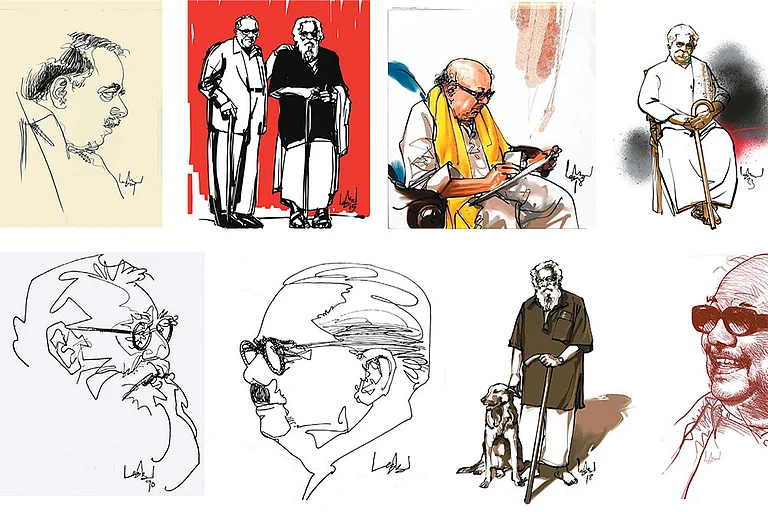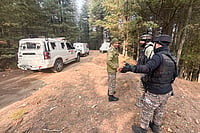In India’s rapidly urbanizing landscape, sanitation remains one of the most persistent infrastructural challenges. While technology has transformed industries from manufacturing to healthcare, the cleaning of open sewers and roadside drains still relies heavily on manual labor. This gap between technological progress and human welfare inspired Aryan Gupta, a student at The International School Bangalore, to take a human-first approach to engineering.
His sanitation rover is not an abstract experiment or a routine school project. It is a working prototype designed to safeguard sanitation workers from one of the most hazardous forms of labor. Built through independent effort and guided by a commitment to ethical design, the rover exemplifies how engineering can address social issues without compromising technical precision or practicality.
Aryan’s fascination with robotics began early. What started as assembling Lego Mindstorms and EV3 kits gradually developed into a deeper curiosity about how motion could be controlled, measured, and applied to real systems. Over time, his projects evolved from playful experimentation to structured engineering. By middle school, he had begun working with Arduino systems, integrating electronics with mechanical motion.
He later trained himself in computer-aided design using Onshape and Shapr3D, eventually moving on to Fusion 360 to refine his designs with greater accuracy. These skills, combined with his ability to visualize systems mechanically, gave him the foundation to create machines that are both functional and efficient. At school, Aryan leads the Arduino Robotics Club, where he mentors younger students, organizes expert sessions, and builds projects that demonstrate how technology can make life safer and easier. He emphasizes not only the mechanics of design but also its purpose, encouraging students to view engineering as a way to solve human problems rather than merely a technical pursuit.
The idea for the sanitation rover emerged from observation rather than theory. During his commute, Aryan often saw sanitation workers clearing roadside drains and open sewers by hand, using basic tools and little protection. Many wore no gloves, masks, or safety equipment despite working in hazardous environments filled with contaminated water and waste. These observations revealed a sharp contrast between the country’s technological advancements and the limited application of those innovations in areas that affect human welfare most directly. It made him reflect on the value of engineering not just as invention but as responsibility.
He began researching existing systems and found that while many countries had mechanized sanitation tools, they were often too expensive or too complex for local deployment. This strengthened his resolve to build something simple, effective, and accessible. He wanted to create a device that reduced physical exposure without taking away human agency. The rover would serve as an assistive tool, allowing a worker to operate it remotely to collect and dispose of waste safely, restoring both safety and dignity to their work.
The mechanical design of the rover follows a principle of functional simplicity. Built around a cuboidal frame with four all-terrain wheels, it can traverse uneven terrain such as mud, gravel, and open drains. Two vertical aluminum rods stand on either side of the chassis, each supporting a motorized pulley system that raises and lowers a scoop. The scoop, made from aluminum mesh welded onto a rigid rod frame, allows water to drain while retaining solid waste, reducing unnecessary weight during lifting. The frame is coated with a corrosion-resistant finish to ensure durability in wastewater environments.

Developing the rover was not straightforward. Limited access to fabrication tools meant Aryan had to rely on alternative means for production. Without a 3D printer, he ordered parts through ROBU, an online service that printed his custom designs. For the chassis and metal sheets, he collaborated with local blacksmiths who helped him cut and weld the frame to precise measurements. This collaboration between digital design and traditional craftsmanship became one of the project’s most defining features, showing how engineering innovation can coexist with community involvement.
One of the most difficult technical challenges was waterproofing. Early trials revealed that even small leaks could cause water to seep into the electronics, risking short circuits and permanent damage. Aryan used a silicon-based sealant to protect sensitive areas, learning through trial that a generous application was necessary to ensure complete insulation. It took several rounds of testing to identify weak points and perfect the sealing process. These refinements made the rover not only more reliable but also safer to operate in harsh conditions.
If the chassis and frame define the rover’s body, its electronic architecture provides the intelligence that animates it. The control system is built around an Arduino Nano microcontroller, chosen for its reliability, ease of use, and adaptability. Acting as the central command unit, it manages power distribution, motor control, and input signals. The L298N Dual H-Bridge Motor Driver connects the logic system to the motors, enabling two DC gear motors to operate independently. This arrangement allows for differential steering, giving the rover precision control and stability even in constrained environments.
The following is a detailed list of the electronic components used in the rover:
1. Arduino Nano
Serves as the primary microcontroller.
Sends pulse-width modulation and direction signals to the motor driver.
Interfaces with the relay and other modules for power and control.
2. L298N Dual H-Bridge Motor Driver Module
Drives two DC motors independently.
Controls motor direction and speed through input signals from the Arduino.
Handles current distribution safely and efficiently.
3. Two DC Gear Motors
Act as the actuators for movement.
Each connected to one output channel of the L298N (OUT1–OUT2 and OUT3–OUT4).
Provide strong torque suited for uneven terrain and variable loads.
4. 12V Lithium-Ion Battery Pack
Main power source for the entire system.
Supplies high current to the L298N motor driver and other modules.
Chosen for its high energy density and relatively light weight.
5. LM2596 Buck Converter
DC-DC voltage regulator.
Steps down the 12V input to 5V for the Arduino and relay.
Ensures stable and regulated voltage to prevent overloading of low-voltage components.
6. Single Channel Relay Module
Controls the switching of high-current circuits.
Provides safety by electrically isolating control and power sections.
Triggered by a digital output from the Arduino.
7. Power Distribution Block
Organizes power delivery from the battery to different components.
Simplifies wiring and improves safety.
8. XT60 Connector
Ensures a safe, high-current connection between the battery and system.
Commonly used in robotics for its reliability and ease of maintenance.

Together, these components create a robust, modular control system that balances simplicity and functionality. The design ensures that the rover is both affordable and replicable for broader community use.
Testing the rover was as much an exercise in persistence as it was in engineering. Aryan first built a controlled testing environment that simulated the uneven, waterlogged conditions of a drain. Early trials exposed issues with motor balance and weight distribution. Through successive iterations, he refined the pulley tension, adjusted the wheelbase, and stabilized the lifting motion. The final version performed smoothly, capable of collecting and depositing debris with consistency and minimal operator effort.
To evaluate its long-term usability, Aryan also developed a maintenance plan, identifying how components could be replaced with locally available parts. This ensured that even in small towns or rural regions, repairs could be handled without advanced tools. He considered the project’s sustainability carefully, aiming for longevity rather than short-term demonstration. It reflected his belief that engineering should account for both design and deployment.
The waterproofing process required extensive verification. He submerged parts of the frame under controlled conditions to check for leakage and monitored electrical readings over time. The use of silicon-based sealing compounds eventually created a fully water-resistant enclosure. It was a slow and repetitive process but one that ensured long-term reliability, an essential feature for a system meant to function in unpredictable environments.
In practical operation, the rover can be controlled remotely through a simple interface. The operator uses a handheld controller to direct its movement, maneuver it toward the target area, and activate the scoop. Once the debris is collected, the rover can lift and deposit it at a designated location. This approach allows sanitation workers to manage waste removal efficiently without direct contact, significantly reducing health risks and physical strain. It transforms a manual process into one of coordination and control, enhancing both safety and dignity.
Although it is a technical achievement, the sanitation rover’s real strength lies in its human-centered design. Aryan’s intention was not to automate human labor completely but to reduce the risk inherent in it. The rover allows sanitation workers to continue their vital work without physical exposure to hazardous waste. This approach represents a shift from the conventional idea of automation as replacement to one of collaboration between human operators and machines.
His project demonstrates that the purpose of robotics is not merely efficiency but safety and dignity. Every choice in its design, from the locally available materials to the modular electronics, was made to ensure accessibility. The rover is meant to be usable by anyone, not limited by cost or complexity. By doing so, Aryan positioned his work within a broader ethical framework that aligns technology with empathy and inclusivity.
Alongside building the rover, he also documented the process meticulously, turning his experience into a formal research paper. The paper, which detailed the engineering principles and ethical considerations behind the design, was published in the International Journal of Scientific Research and later presented at the Innosphere Conference. The project received the CREST Award for innovation and sustainability, and the rover itself now holds a patent pending. These recognitions validated the originality and impact of his work, but for Aryan, they also marked a step toward a larger goal: making technology a genuine tool for social progress.
His academic work has complemented his projects at every stage. As part of the International Baccalaureate Diploma Programme, Aryan studies Physics, Chemistry, and Mathematics at a higher level, subjects that have deepened his technical understanding. His Extended Essay on the mathematics behind GPS navigation reflects the same curiosity that drives his engineering work, combining abstract reasoning with real-world function. His earlier paper on robotics ethics in Asia explored the moral implications of automation, particularly in developing countries. The sanitation rover became a natural continuation of that exploration, embodying his ideas about ethical responsibility in technology.

The rover’s modular design and robust framework allow it to be adapted beyond sanitation. With minor changes, it could be used for waste collection in factories, debris removal in disaster zones, or even light-duty underwater cleanup. Its low cost and ease of assembly make it ideal for use in small-scale civic programs, especially in communities that lack access to advanced mechanization. Several organizations have already shown interest in exploring the possibility of pilot deployment once production scaling begins.
Completing the project demanded a balance between academic rigor and independent learning. Aryan handled design, fabrication, programming, and testing himself, often spending long hours troubleshooting minor faults or recalibrating sensors until the system performed exactly as intended. He treated each obstacle as an opportunity to learn, refining both the mechanical and electronic aspects through patient iteration. This process built in him a strong foundation of analytical problem-solving and self-reliance, qualities that now define his approach to engineering.
For Aryan, the sanitation rover is more than a machine. It represents an outlook on engineering that values purpose as much as precision. Through this project, he discovered that progress in technology is meaningful only when it improves lives. His focus has always been on the intersection of innovation and empathy, creating devices that respond to human needs rather than replace them.
Looking ahead, he hopes to continue this philosophy through his studies in mechanical engineering in the United States, where he plans to specialize in robotics and sustainable systems. He aims to develop designs that merge technical excellence with ethical awareness. Beyond his engineering work, he is writing a book to introduce middle school students to the principles of gears and motion, helping younger learners understand how mechanical systems transfer energy and create movement.
The sanitation rover stands as evidence that responsible engineering can begin at any scale. Built independently, without institutional funding or industrial equipment, it bridges the gap between theoretical knowledge and societal application. Its success demonstrates that innovation does not depend solely on resources but on intent. By aligning engineering with compassion, Aryan Gupta shows that machines can be built not just to work efficiently but to serve responsibly.
In an era where robotics often focuses on speed and automation, his project offers a quieter but more important message: that technology’s greatest strength lies in its ability to make human work safer, more dignified, and more inclusive. The sanitation rover is not just a product of engineering skill but of human consideration. It represents a step toward a future where technological progress is guided by empathy, responsibility, and purpose.

























